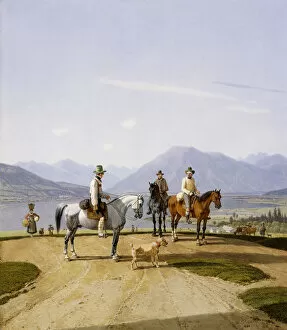Wilhelm Von Kobell Collection
Wilhelm von Kobell: A Master of Equestrian Art Wilhelm von Kobell, a renowned German artist born in 1766
All Professionally Made to Order for Quick Shipping
Wilhelm von Kobell: A Master of Equestrian Art Wilhelm von Kobell, a renowned German artist born in 1766, left an indelible mark on the world of art with his captivating works. Known for his exceptional talent in capturing the beauty and grace of horses, Kobell's artistic prowess extended beyond just equestrian subjects. One of his notable pieces is "Camp de L'Infanterie Bravo Palatine, " created in 1803 using pen and ink. This artwork showcases Kobell's attention to detail as he depicts soldiers stationed at the camp, highlighting their uniforms and precise formations. In contrast to this military scene, "Reiter am Tegernsee" from 1838 reveals a serene landscape where horsemen leisurely ride along the picturesque shores. Through skillful brushwork and vibrant oil colors on panel, Kobell transports us to a peaceful moment amidst nature. Another masterpiece by Wilhelm von Kobell is "Postilion on Horse in a Winter Landscape, " dating back to approximately 1798. This work captures the essence of winter with its snowy scenery while showcasing the artist's ability to convey movement through carefully rendered brushstrokes. Kobell also depicted scenes closer to home with "Horsemen near Munich" from 1830. Here, he portrays riders galloping through Bavarian landscapes surrounding Munich—a testament to his deep connection with his homeland. Not limited solely to equestrian themes, Wilhelm von Kobell demonstrated versatility throughout his career. His painting titled "Austrian Soldiers" provides insight into late 18th-19th-century military attire and serves as an invaluable historical document. Additionally, we catch glimpses of the artist himself through self-portraits such as one created around 1800. In this introspective piece, we witness both vulnerability and confidence emanating from Von Kobell's gaze—an intimate window into his inner world.











